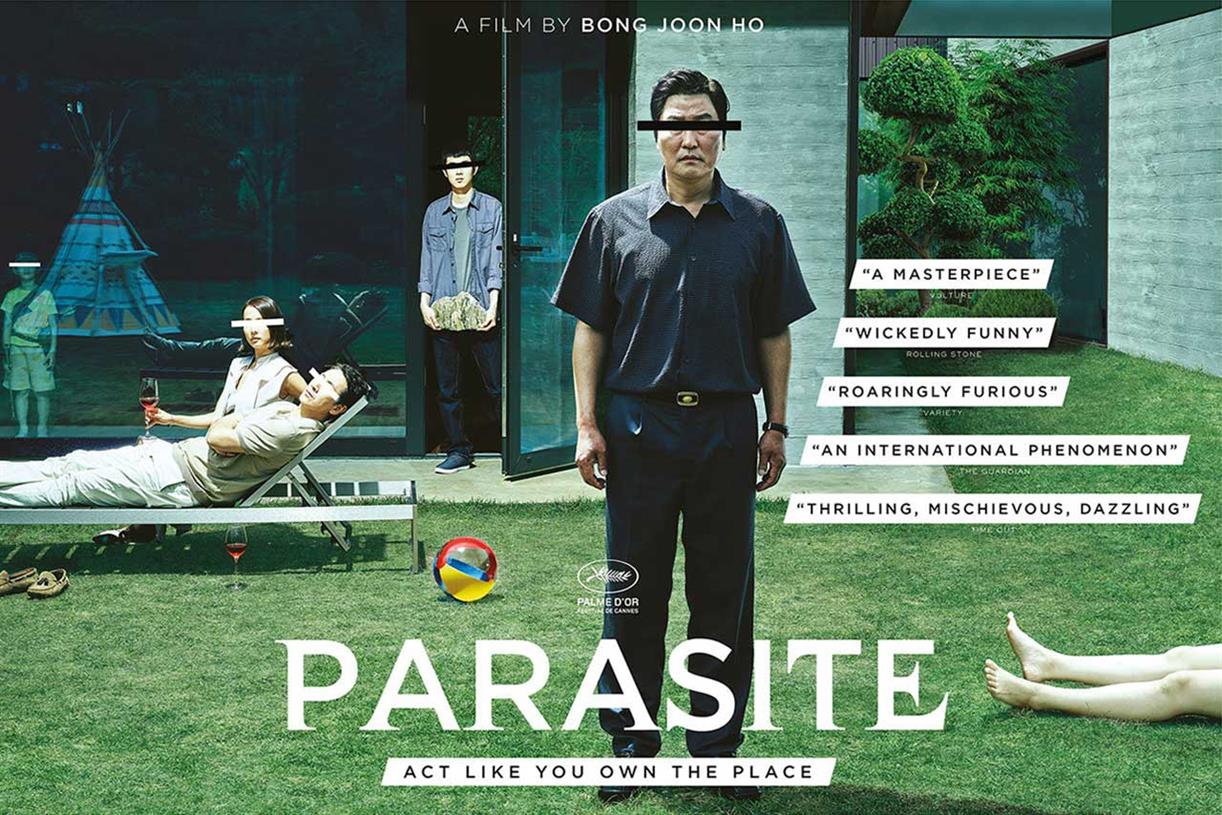Introduction:
“Parasite,” directed by Bong Joon-ho, stands as a cinematic masterpiece that transcends cultural boundaries and redefines the expectations of storytelling in cinema. Released in 2019, this South Korean film not only made history by winning the Palme d’Or at the Cannes Film Festival but also went on to make a significant impact globally, earning widespread critical acclaim and multiple prestigious awards. In this comprehensive exploration, we delve into the intricate layers of “Parasite,” examining its narrative brilliance, social commentary, and the profound impact it has left on the world of cinema.

Chapter 1: The Plot Unfolds
1.1 The Kim Family
“Parasite” introduces us to the Kim family, living in a cramped semi-basement apartment in Seoul. The family consists of Ki-taek (Song Kang-ho), his wife Chung-sook (Jang Hye-jin), and their two adult children, Ki-woo (Choi Woo-shik) and Ki-jung (Park So-dam). Struggling to make ends meet, the Kims seize an opportunity when Ki-woo is offered a position tutoring the daughter of the wealthy Park family.
1.2 The Parks: A World Apart
The Parks, on the other hand, live in opulence in a modern architectural marvel. Mr. Park (Lee Sun-kyun), the affluent patriarch, and his wife, Mrs. Park (Cho Yeo-jeong), inhabit a world that seems untouched by the struggles of the Kims. As the Kim family infiltrates the lives of the Parks, a complex and gripping narrative begins to unfold, blurring the lines between the haves and the have-nots.

Chapter 2: Social Commentary and Class Struggle
2.1 Symbolism and Metaphor
“Parasite” utilizes symbolism and metaphor to depict the stark disparities between social classes. The physical geography of the Kims’ semi-basement apartment and the Parks’ modern mansion becomes a visual metaphor for the economic and social hierarchy that defines their lives. The film ingeniously uses architectural spaces to convey the pervasive influence of class on every aspect of society.
2.2 Satirical Elements
Bong Joon-ho infuses “Parasite” with satirical elements that provide a biting commentary on class struggle. The film navigates the comedic and tragic aspects of the Kim family’s attempt to improve their socio-economic status. The intricate balance between humor and dark reality highlights the absurdity of the socio-economic divide and the lengths people go to escape their circumstances.
Chapter 3: Cinematic Brilliance
3.1 Direction and Cinematography
Bong Joon-ho’s direction in “Parasite” is nothing short of brilliant. The film’s pacing, framing, and use of visual metaphors showcase a directorial mastery that keeps the audience engaged from start to finish. The cinematography by Hong Kyung-pyo captures the stark contrast between the two families’ lives, utilizing every frame to convey the underlying tension and societal critique.
3.2 The Ensemble Cast
The performances of the ensemble cast contribute significantly to the film’s impact. Song Kang-ho delivers a compelling portrayal of Ki-taek, navigating the complexities of his character with nuance. The entire cast, including Choi Woo-shik, Park So-dam, Lee Sun-kyun, and Cho Yeo-jeong, brings authenticity to their roles, creating a memorable ensemble that adds depth to the narrative.
Chapter 4: Genre Subversion and Narrative Twists
4.1 Genre Fluidity
“Parasite” defies easy categorization, seamlessly blending elements of dark comedy, thriller, and drama. The film keeps the audience on the edge of their seats by subverting genre expectations, making it a truly unique cinematic experience. Bong Joon-ho’s ability to navigate between genres reflects his storytelling prowess and willingness to challenge conventional norms.
4.2 Unpredictability and Shocking Turns
The narrative of “Parasite” is characterized by its unpredictability and shocking turns. The film takes unexpected paths, constantly keeping the audience guessing about the characters’ fates. This narrative unpredictability adds to the film’s suspense and contributes to its status as a groundbreaking piece of cinema.
Chapter 5: Global Impact and Recognition
5.1 Cannes Film Festival and Beyond
“Parasite” made history at the 2019 Cannes Film Festival by becoming the first South Korean film to win the Palme d’Or. This accolade catapulted the film into the global spotlight, leading to a widespread release and enthusiastic reception from audiences worldwide. The film’s success opened doors for more international recognition of South Korean cinema.
5.2 Academy Awards Triumph
At the 92nd Academy Awards, “Parasite” continued its trailblazing journey by winning four Oscars, including Best Picture, Best Director, Best Original Screenplay, and Best International Feature Film. The unprecedented success marked a significant moment for South Korean cinema, breaking barriers and redefining the possibilities for non-English language films on the global stage.
Conclusion: A Cinematic Tour de Force
In conclusion, “Parasite” stands as a testament to the power of cinema to transcend cultural and linguistic barriers. Bong Joon-ho’s masterpiece not only captivates with its narrative brilliance, social commentary, and cinematic craftsmanship but also leaves an indelible mark on the viewer’s consciousness. “Parasite” challenges preconceived notions, sparking conversations about class, privilege, and the human condition.
Film Evaluation: “Parasite” is a cinematic tour de force that combines narrative innovation, social relevance, and impeccable craftsmanship. Bong Joon-ho’s direction, coupled with outstanding performances from the cast, elevates the film to a level of storytelling rarely seen in contemporary cinema. The film’s global impact, marked by its historic wins at prestigious festivals and award ceremonies, solidifies its place as a groundbreaking work of art. “Parasite” is not merely a film; it is a cultural phenomenon that will continue to be studied, celebrated, and remembered for years to come. Its legacy extends beyond its genre, language, and origin, making it a timeless piece of cinema that has redefined the possibilities of storytelling on the world stage.


